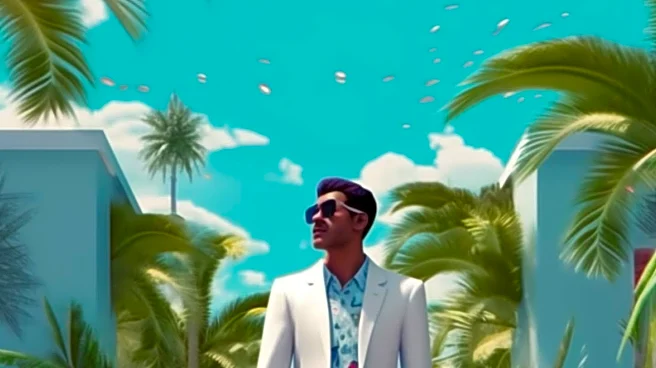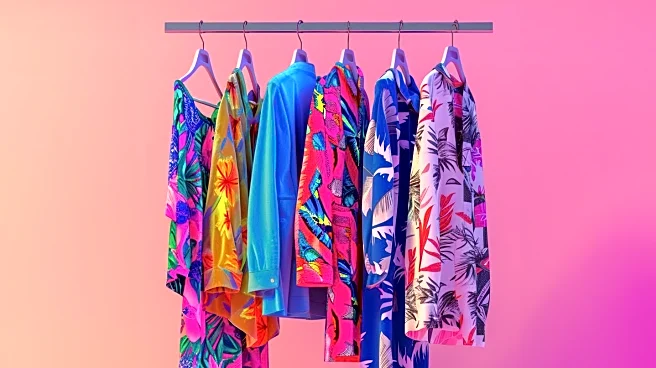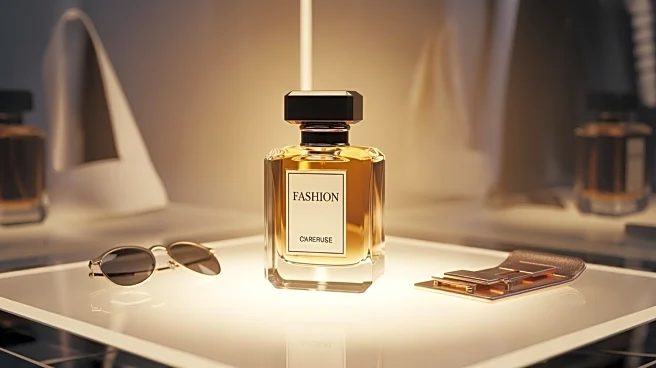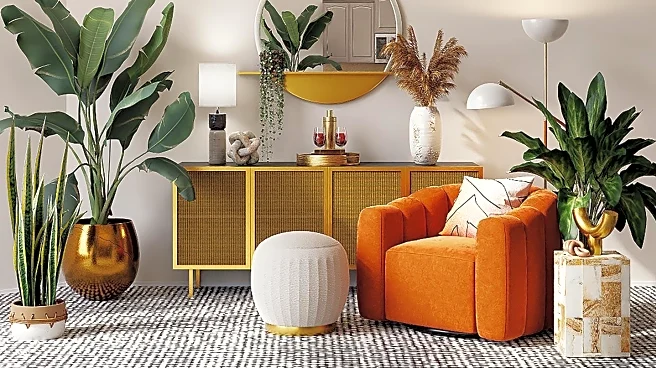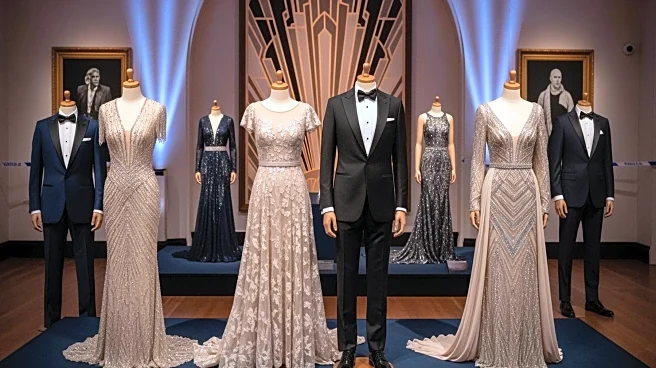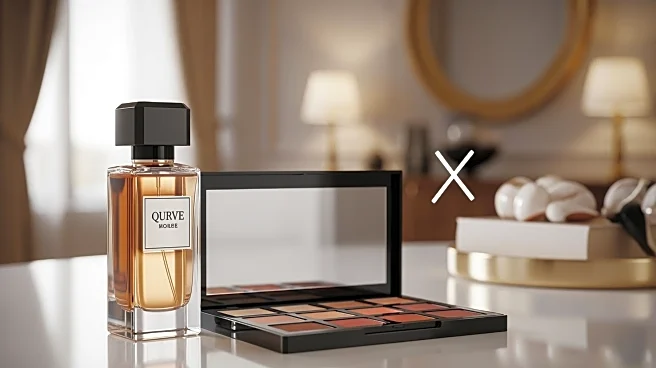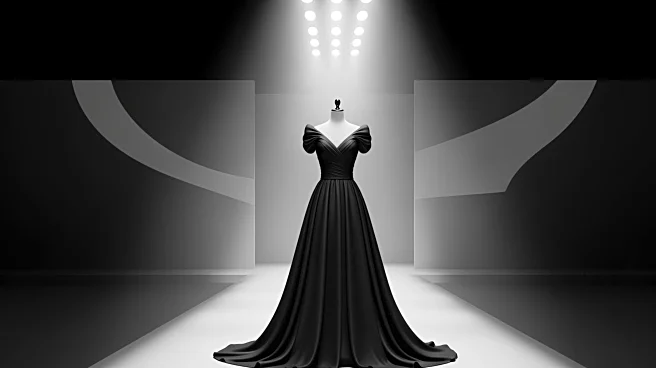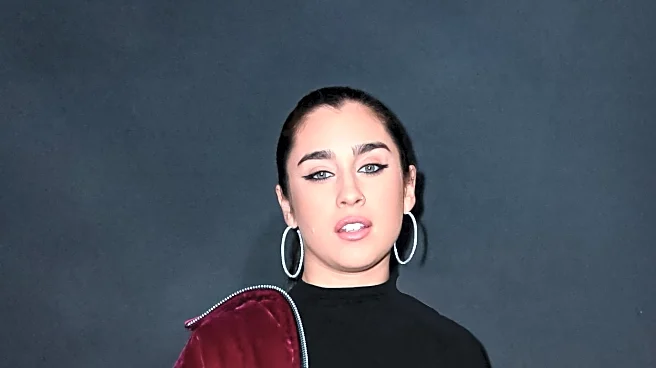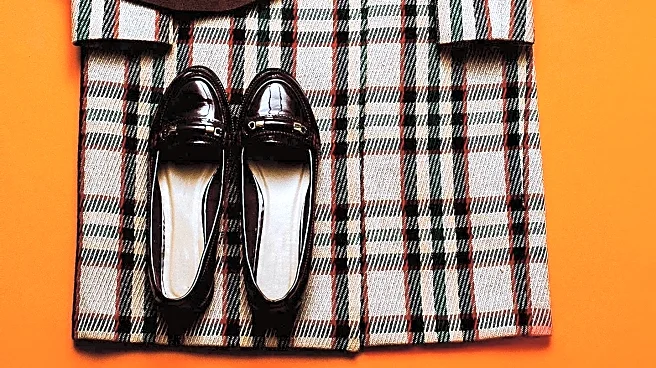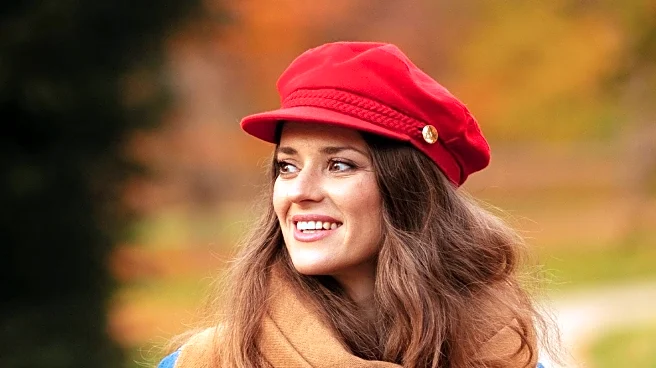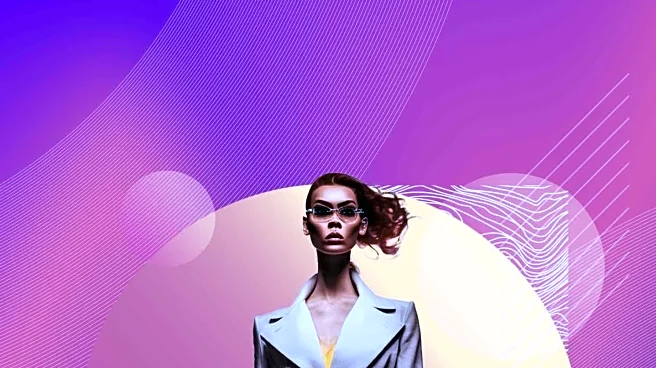What's Happening?
Several high-end fashion brands are showcasing new luxury items that embrace maximalism and indulgence, as highlighted in a recent feature. Bottega Veneta has introduced a new Campana bag, crafted from
woven nappa leather, designed for everyday use with a spacious interior. Burberry offers a shearling scarf in deep ruby red, featuring large pockets and chunky fringing. Loewe presents a lambskin jacket with a bomber-inspired silhouette, adjustable for personalized styling. Ann Demeulemeester's latest collection includes the Finnbo Santiago boots, inspired by the desert landscape and featuring a western silhouette. Additionally, D.S. & Durga collaborates with Soft Services on a Debaser Buffing Bar, a body care product inspired by their popular fragrance. Marni, Balenciaga, and PolsPotten also contribute to this trend with opulent accessories and home decor items.
Why It's Important?
The move towards maximalism in fashion reflects a broader cultural shift towards embracing bold and extravagant styles. This trend could influence consumer behavior, encouraging more spending on luxury items that offer unique and personalized experiences. The emphasis on high-quality materials and craftsmanship highlights a growing appreciation for artisanal products. This shift may benefit luxury brands by attracting consumers seeking distinctive and statement-making pieces. However, it also poses challenges for brands to balance exclusivity with accessibility. The trend could impact the fashion industry by setting new standards for creativity and innovation, potentially leading to increased competition among luxury brands.
What's Next?
As maximalism gains traction, fashion brands may continue to explore bold designs and collaborations to capture consumer interest. The trend could lead to more partnerships between fashion and other industries, such as beauty and home decor, to create cohesive lifestyle offerings. Brands might also focus on sustainability, using recycled materials and ethical production methods to appeal to environmentally conscious consumers. The success of these luxury items could prompt mid-range brands to adopt similar strategies, potentially democratizing the maximalist trend. Industry stakeholders will likely monitor consumer responses to these offerings to adjust their strategies accordingly.
Beyond the Headlines
The embrace of maximalism in fashion may have deeper cultural implications, reflecting a desire for self-expression and individuality in a post-pandemic world. This trend could signify a shift away from minimalism, which dominated fashion in recent years, towards a more expressive and diverse aesthetic. The focus on luxury and opulence might also highlight societal divides, as not all consumers can afford such high-end products. This could spark discussions about inclusivity and accessibility in the fashion industry, prompting brands to consider more affordable options without compromising on style and quality.
